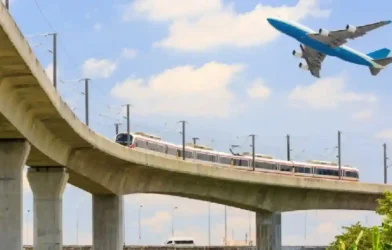Subtotal ₹0.00
Considering that real estate despite facing all the headwinds has made a remarkable turnaround, this year’s budget should focus on enabling measures to carry on this momentum for sustainable growth of the real estate sector. Vinod Behl
The budget needs reformative measures with regard to tax relief, ease of doing business and cost of capital.
Over the past few years, the government’s measures have worked in elevating India to the 63rd spot in World Bank’s Ease of Doing Business Report. However, much more needs to be done to boost the confidence of investors. Single window clearance mechanism has been eluding real estate for long which is required to cut down compliance costs. Same is the case with industry status to real estate to facilitate cheaper capital to the capital-intensive industry especially when the cost of funding has gone up due to high-interest rates. NBFCS, particularly smaller ones, need active liquidity support.PE/VC industry has called for a harmonised framework for AIF to avoid legal challenges.
On the taxation front, there is a need to take progressive steps. Besides the repeated demand for raising personal income tax limits and providing higher tax benefits to homebuyers, there are other tax initiatives which are required to provide impetus to the real estate sector. There is demand from banks to exempt sale of immovable property mortgaged to lenders for recovery of bad loans via auction, from tax deduction at source or TDS to save 1% of sale value of property lost during recovery. There is a need to extend the benefit of deferral of capital gains tax for land owners to other forms of entities to bring the taxation of JDA at par with different types of taxpayers to avoid unfunded tax liability, in turn reducing litigation. In the backdrop of rising building materials prices leading to higher property rates, high GST on building materials like cement (28%) and steel(18%) needs to be brought down. Similarly, for LTCG, there is a clear case for reducing tax rate and holding period.
Affordable housing plays a great role in boosting real estate. But of late, the share of price-sensitive affordable housing in the overall share of housing sales has been declining due to reducing affordability. Therefore, there is a need to take measures both on the demand and supply side to boost affordable housing. On the demand side, the continuation of credit-linked subsidy under PMAY is important. On the supply side, due to costlier capital, land and building materials, developers are finding it difficult to provide affordable housing within Rs 45 lakh in metro cities. Extension of 100% tax holiday to developers of affordable housing beyond March 31, 2022, abolition of GST or reinstatement of input tax credit f, rationalisation of GST rates for construction materials, scaling up of SWAMIH Fund and inclusion of commercial real estate under this fund are among a host of other measures required to strengthen supply side with a view to provide a push to affordable housing. Timely completion of projects is a great sentiment booster for homebuyers and investors. To speed up project completions, besides revamping SWAMIH Fund, Insolvency and Bankruptcy Code (IBC) should be overhauled especially as real estate has seen the second highest share (21%) of NCLT cases and one-third of insolvency cases are works in progress. To provide relief to homebuyers, insolvency proceedings should be launched against only the defaulting entity and not the real estate company.
Alternative assets like warehousing and data centres have emerged as an attractive segment for real estate investors. To further capitalise on this, favourable policy measures are required. For warehousing, the government should speedily implement Credit Guarantee Fund to help reduce the cost of capital and bring more warehousing assets into the formal sector. The data centre incentivisation scheme with land and related subsidies on capital and interest should be rolled out. The budget should also pave way for developing new SEZs for data centres.














